Article by Steve Haines
The river murmured under stars and a half moon, and I dozed under SCAMP’s veranda, while Dan slept on the sand bar a hundred feet away. The air was cool and quiet, except for rustling leaves and creaking branches. There was some soft bird talk, and the mullet never slept.
This was a perfect place, and I was in it, having found that narrow zone between resting and waking. A silent observer, I took in this river music as though I was not too near, not too far away.
There was a splash, then another, then a footstep in the water, very near, and my eyes opened wide as my pulse quickened. Another footstep, and I sat up, listening. Another halting step, just off the starboard side now, and I moved there quietly. Pausing for my eyes to catch up, I snatched the boom tent back as a white heron squawked, splashed, and took flight. I exhaled a short word and relaxed, shining my light around. The water was full of minnows, drawn to the eddy created by Scamp, and the big bird had come to dine. Sorry, buddy.
The beginnings of this river are in in north Georgia. It wanders through fields and towns, is bridged and delayed by dam formed lakes, but it pushes on, joined by other streams, and makes its way to the Gulf of Mexico. It was home to the Apalachee people, now long gone, then to the Spanish, English, and to us.
The Apalachicola River as such starts at Chattahoochee, just below the dam which forms Lake Seminole. It was on the southeast bank, at River Landing Park, that we would launch. But the planning had started long before, and the trip actually began when Dan Phy left Fort Bragg, California, with the Scamp B. Frank in tow.
The idea was to see this lightly populated area over a period of a few days, overnighting on sandbars, sailing as much as possible, motoring when we must. Gear was selected for practicality, durability, and minimum impact. Provisions were simple, but more than adequate, as we were aware that resupply would be difficult once we pushed off.
On launch day, we left Panama City, and, after a side trip to Two Egg, were at the river’s edge. In less than an hour we were afloat, with gear aboard and stowed and the sail up. Final plans were made for departure, check-ins with home, and arrival in Apalachicola, 105.5 miles down the sailing line. Winds were forecast at 10-12 from the north, though it didn’t feel like it down on the river. But the temperature was in the high 70s and the sky clear.
A young local fellow had seen and admired Scamp, and was surprised to learn of our plans. He told us that alligators up to thirty feet ply this river, and that we should watch out for them, which we promised to do.
Pam, my wife, stood ready to take pictures from the floating dock as we shoved B. Frank’s nose upstream with the helm over. The current turned us downstream, and we were underway. The sail filled, and we ran quickly, with Pam scrambling to get pictures before we were out of range. The GPS quickly passed 5 mph, then 6, and stayed around 6.5. The wind was not strong, the river nearly flat, and the sailing effortless, with B. Frank touching 6.9 several times. It was pretty clear that Scamp pays little attention to hull speed and piques the curiosity as to her potential.
I had been aboard Scamp 1 at Port Townsend for a few minutes, with Howard Rice at the helm. But this was my first time at the helm, and a day I will not forget. Perfect weather, beautiful scenery, comfortable cockpit, responsive helm, and a good turn of speed are hard to beat.
We saw our first alligator, and then another. They didn’t look to be thirty feet, but they were intimidating, even at a distance. One came off the bank with a big splash, then paced us for a minute before turning toward the bank.
In less than an hour we passed far below the Interstate 10 bridge, and soon we looked up to see Gregory House, a mansion perched high above the river at Torreya State Park, on the east bank. We had considered making this our first stop, but we were there early, and it was not a good place to go ashore, so we pressed on.
We had seen several sandbars, and any might have made a good place to stop. Almost every place else, trees came to the water’s edge, and fallen trees and branches were common hazards, but easily spotted and avoided. There were several sets of rock dikes, built for erosion control, which ran at right angles to the riverbank, jutting to the edge of the channel. Some had snags stuck on them, intruding into the channel, making the middle of the river the best place to be.
As the banks rose, the wind was often blocked, and changed direction and strength often. Still, Scamp was perfectly controllable, as long as there was wind, and I managed to avoid hitting anything, except for a large submerged post, which I saw right after the centerboard bounced off of it.
There were times when the wind carried us away from the eddy currents, and times when it put us into them. Other times, the current tried to take us one way, the wind another, when we needed to go someplace else altogether. Sailing under these conditions was quite different from lake or bay sailing, and Dan’s river kayaking experience was invaluable in helping read the river.
From time to time, the current overcame the helm, resulting in an upstream turn; sometimes we were carried sideways or backwards, but we always avoided the obstacles. Eventually I came to use this counterintuitive tactic deliberately, and labeled it the “B. Frank Maneuver.” It worked, and we didn’t hit anything.
It is important to be ashore well before dark, and by 6 p.m. we had found a nice spot just downstream from one of the rock dikes, on the east bank. A small sandbar provided a great place for our first night, and Scamp’s nose was on the sand. Just under the sand, though, was sticky mud, which was hard to wash off. This was the only place we found that mud on the trip, but we watched for it.
A mushroom anchor, chain, and rode were stored in a 5-gallon plastic bucket on the port side of the veranda, and the sand made burying the anchor easy. Tracks showed that wild hogs, deer, and raccoons were regular visitors here, and a large area near the woods had been rooted by the hogs.
Twigs and sticks from the sandbar provided plenty of fuel for the Kelly Kettle, and the coffee was soon ready. Dan’s one-man backpacking tent went up, along with Scamp’s simple ripstop boom tent, and our first night’s camp was ready, over 17 miles downstream.
By 7:15 the sun was below the west bank, and by 8:00 it was very dark. The sounds of insects and birds changed against the rivers, and the air cooled quickly into the high 40s. But Scamp’s cockpit and tent, along with an air mattress and lightweight sleeping bag, were level, dry, and comfortable.
Heavy dew underscored the importance of the boom tent, and every night on the river was wet, even without rain. Our wood was wet, too, but we still managed to get the kettle going. After that, though, we started keeping our dry wood overnight in a plastic bag.
Before leaving, we made sure we had left nothing behind, and buried the few ashes left by the Kelly Kettle.
We took our time getting under way, but soon worked our way past Blountstown and Bristol, where the wind made sailing under the bridge challenging. There were a few fishermen out, and all waved and stayed well clear. Ahead, a pair of fishermen pulled along the bank, and had just stopped when they boated a fish at least three feet long.
Here and there were floating houses, tied to big trees. Many were small and simple, but some were newer, and appeared well appointed. Most can only be reached by boat, and locals have been using them for generations for getaways. Some appeared to have full time liveaboards, though.
A pair of young guys in a small fishing boat passed us going downstream, and we met them an hour or so later as they came back toward us. Well ahead, they throttled back and idled toward us, leaving no wake. They were curious about Scamp and our trip, and followed along behind, starting the motor to catch up when a breeze moved us ahead. I was impressed by their courtesy, and we wished each other well as they headed north to Bristol.
We passed bluffs of chalk and alum, and towering trees. There were times that the eddies might have taken us into the snags, but for Dan’s quick use of a paddle with a folding shaft. Oars were stowed on the sole, but it was quicker to paddle, and Scamp is light and responsive enough for it to work well.
At the helm, I sat to starboard, and Dan stayed forward on the port side. The aft floor compartment held our trash, including empty water bottles and well protected Wag-Bags. The forward floor compartment kept our water reasonably cool and easy to reach. Snacks, mostly fruit, were in the shade of the veranda, or in the lockers there, along with other gear. Storage was never a problem, and we actually had plenty of room left over. We did not take a cooler or ice, though we could have.
Dan was nursing a knee injury when we started on the trip, but managed well. Climbing back aboard the boat after a stop, though, I zigged, he zagged and stepped in a hole, further injuring the knee. It was a bad thing, but we pressed on.
Our second camp was on a large sandbar without the mud we’d found upstream. Like the first site, it was covered with animal tracks, and there was considerable damage from pigs rooting by the woods. Camp and coffee were quickly made, and another night began.
It was here that the bird and I startled each other, and here that the Big Dipper looked like it was going to scoop out the trees. It was here, too, that wisps of fog stood straight and marched downstream, against flat fog-clouds going upstream. They met silently over the river, just off the transom.
After breakfast, we got started, again making sure to leave no trash or ash. It didn’t occur to either of us that this was Friday the 13th. It was a difficult sailing day, though, with a rising wind that tried to stay on Scamp’s nose, and a serpentine river with steep banks and plenty of snags. We found a good place to stop and knocked off early, planning to get an early start.
We left our camp above the Wewahitchka cutoff early, but the wind was already up, and the NOAA radio forecast 15-20 from the south. There were some whitecaps on the river, and we were taken aback a few times, and relied on the now tested “B. Frank Maneuver” several times to stay nearer the middle of the river. The middle course avoided snags better, but the wind was stronger, so we bowed to practicality and started the motor. The choice was easier because we weren’t gaining ground, and it was getting to be frustrating work.
The Suzuki 2.5 horse 4-stroke short-shaft was quick to start, and ran perfectly. On the adjustable mount, a long shaft is not needed, and the prop didn’t come out of the water, even in sporting conditions. The 1 liter tank needs some breathing room near the gas cap, though, and will tell you if you overfill it. At 1/2 to 3/4 throttle, we pushed through stiff headwinds, usually making between 5 and 6 mph. There were times when we rounded a bend and took it on the chin, slowing to as little as 3.5 for a second or two before regaining speed. This happened when the wind had so overpowered the current that channel markers were flattened out, pointing upstream. I was surprised when I calculated our fuel consumption at better than 25 miles per gallon through the water.
Saturday morning near Wewahitchka finds lots of people fishing, and lots of boats were up in the bushes, and many didn’t see us. They were fishing. I have family and friends there, and wondered if any were out there. We passed apiaries, set back from the bank, where bees make honey from the tupelo blossoms, and many camp houses. There were many small creeks that joined the river, and the views were like looking up into forested tunnels. These might provide shelter in a blow, and with the mast down, Scamp would be perfect for exploring.
We made good time, and might have made Apalachicola Saturday night. But it is likely that we’d have run out of daylight, and we had not seen or heard one boat out after dark since we’d been on the river.
We wanted to get to the beer and oysters around noon on Sunday, and once we were within striking distance, we started looking for sandbars. Below Fort Gadsden, we found one on the east bank, and were quickly anchored just downstream from a camphouse.
The sand was coarser here, but there was no mud, and there were deep tracks in the sand. Behind the beach was a vast cypress swamp, and the insects were loud. Unlike our other sites, there was plenty of trash around.
About 75 yards downstream, a family played in the water. The river was wider there, and rolling against the wind, but it was still a beautiful place on a fine day. It was then that the insects, buzzed louder, or so I thought. From around the next bend, like the smokers from “Waterworld,” came a pack of personal watercraft. There were eight of them, and four or five had two aboard. All but one buzzed us before beaching.
They were loud, and I winced at the thought of them partying all night on the beach. But they didn’t stay, and, after rocking our boat as they blasted off, passing within 25 feet or so of our stern, they were gone. They won the prize for being the only rude people we encountered on the trip.
From down the beach, a Chevy pickup slowly made its way toward us, and stopped in the tracks when it got close. It was then that we met Danny and Coy, oystermen from Eastpoint, across the bridge from Apalachicola. They were curious about Scamp and our trip, and were a trove of local knowledge. When they learned that we hadn’t brought beer, they insisted that we drink some of theirs, and invited us to go into town for some entertainment. They offered to take us oystering or shrimping another time, but said it was too rough in the bay to go this weekend. They were right.
Cell service had been surprisingly good until our last stop, but Coy had told me that I might get service within a short walk of there, and he was right. I was able to call home and confirm our plans.
Next morning, we headed out into it and slogged downstream. Our plan was to haul out at the ramp below the Gorrie Bridge. But under the conditions, we decided to head up Scipio Creek to a more sheltered area.
About five miles upstream, I thought I saw a sailboat behind us, but then wasn’t sure. The conditions demanded that I watch ahead, and it was easy to crab over toward the shallows. This was not a day to go aground, even in grass, so I paid attention.
The chop was stiff, but we took very little water aboard. That happened when a wave slapped the side of the bow and came up, and the wind blew it into my face. But it was splashes, not gallons, or even pints.
We turned up Scipio Creek and waved while Pam took pictures from the deck of Up The Creek Raw Bar. There are docks just below the Bar, and, to our pleasant surprise, a ramp.
Scamp was quickly alongside, and almost as quickly, we were upstairs and into some cold beer and very good food. From upstairs, we saw the boat that had followed us; it was a blue hulled Potter 19.
We had been watched from another dock by a salty looking fellow. He and another local, who lives on a big Southern Cross, are SCA readers, and were as happy to see a Scamp in person as we were to show them.
A couple of hours later, we were back in Panama City, cleaning the boat, unpacking, and talking about Cedar Key. But this had been a special trip, in a special boat. •SCA•
Regular contributor Steve Haines has been always been a catboat sailor, but was taken by the idea of Scamp when he first heard about it. He and his wife sail Scamp #6 and their cat-rigged Seaward Fox out of Panama City, Florida.
First appeared in issue #78

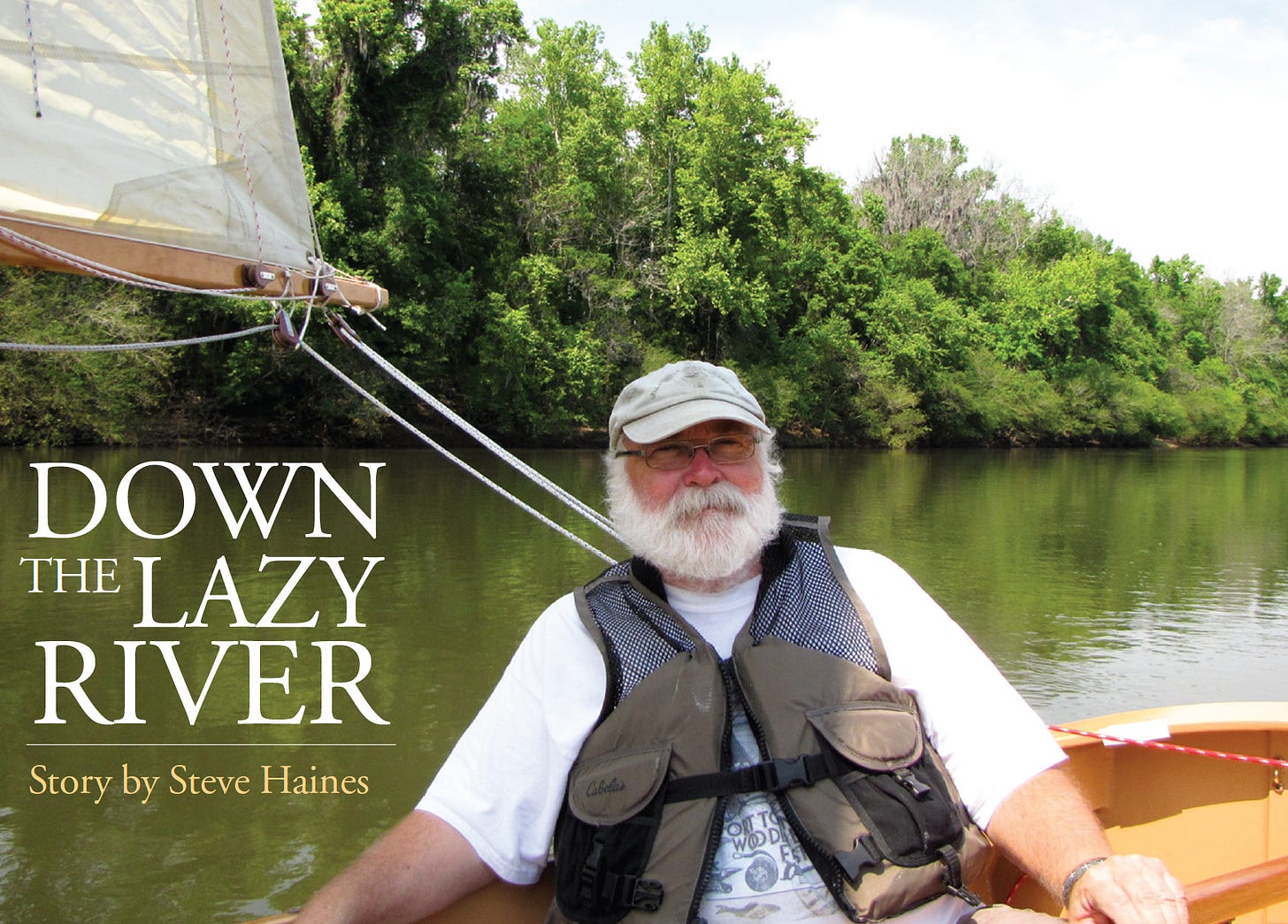
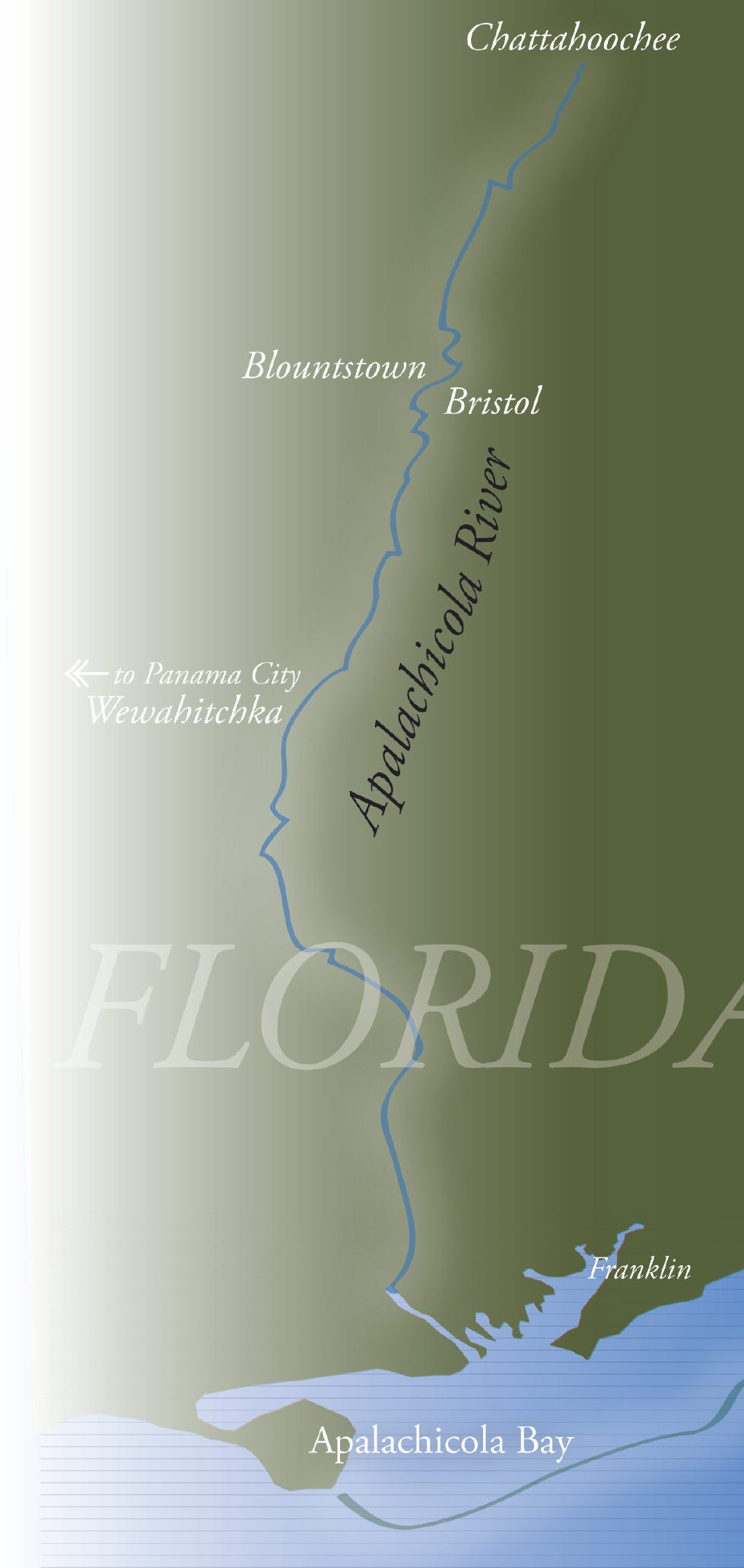
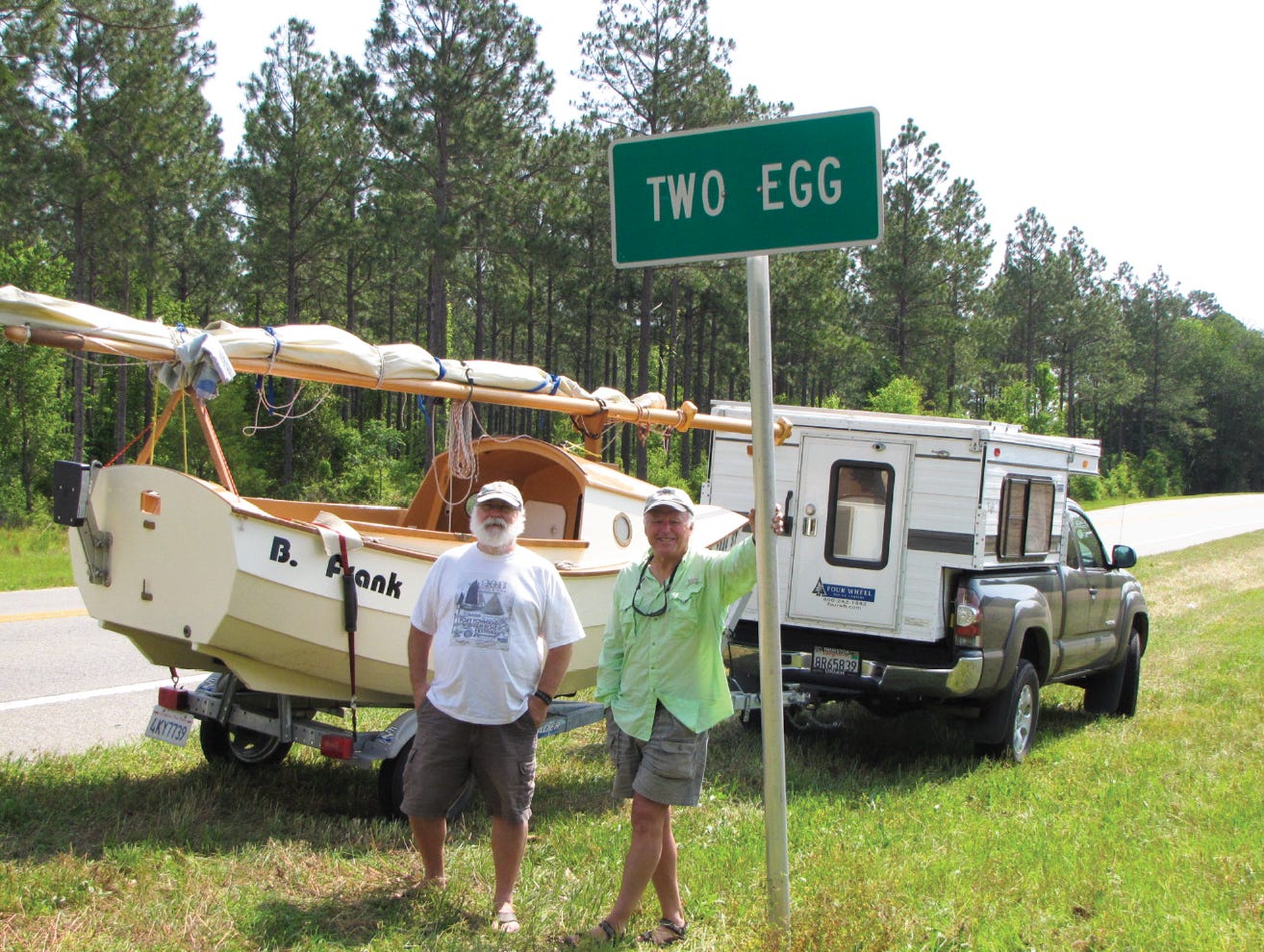
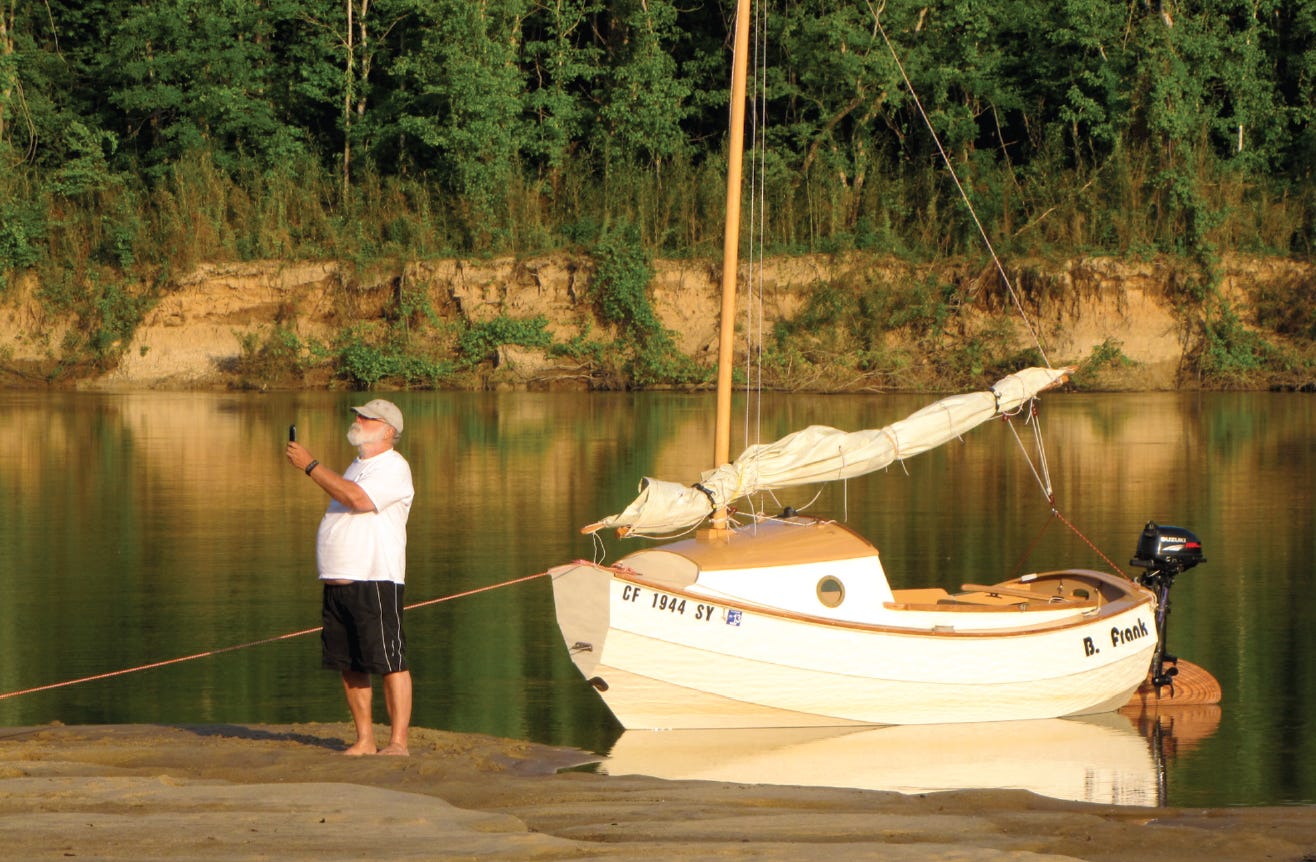
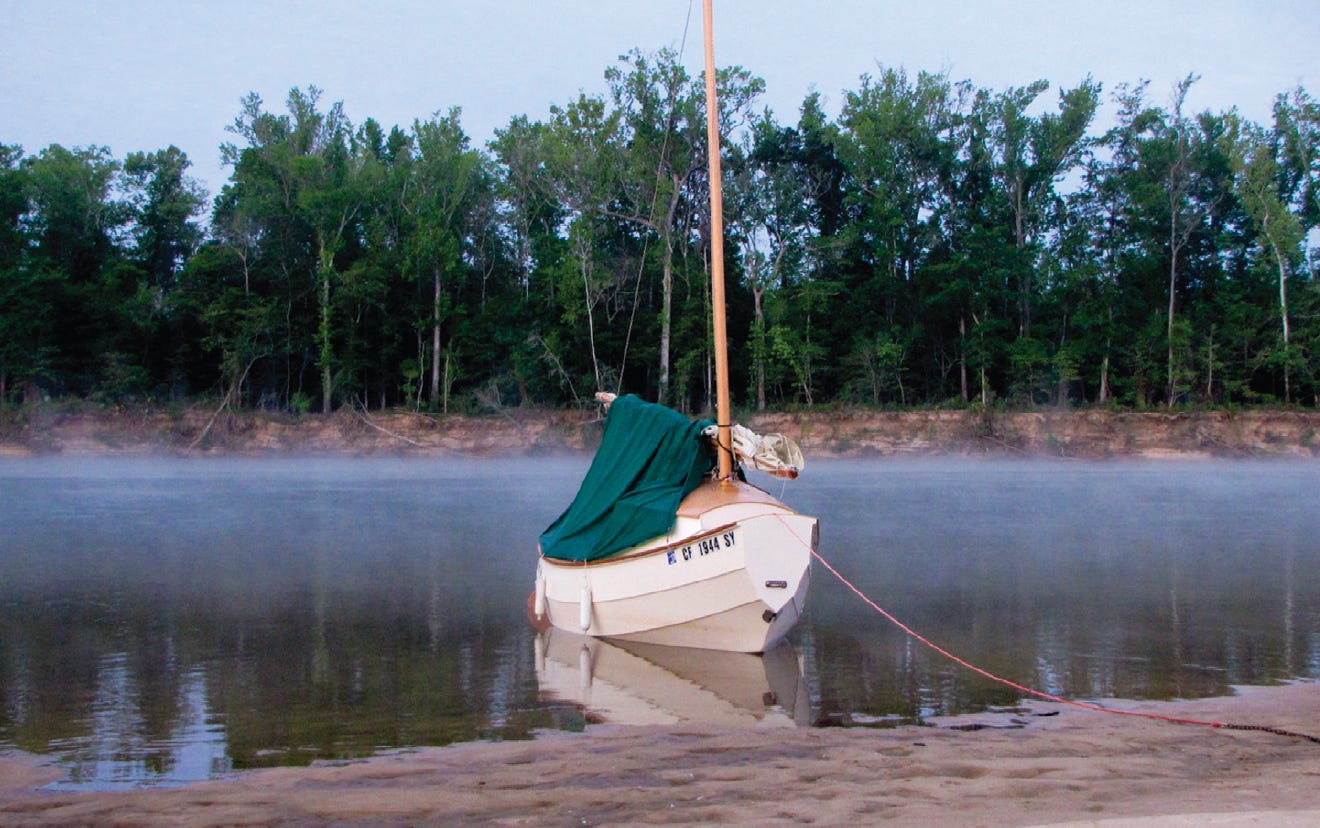
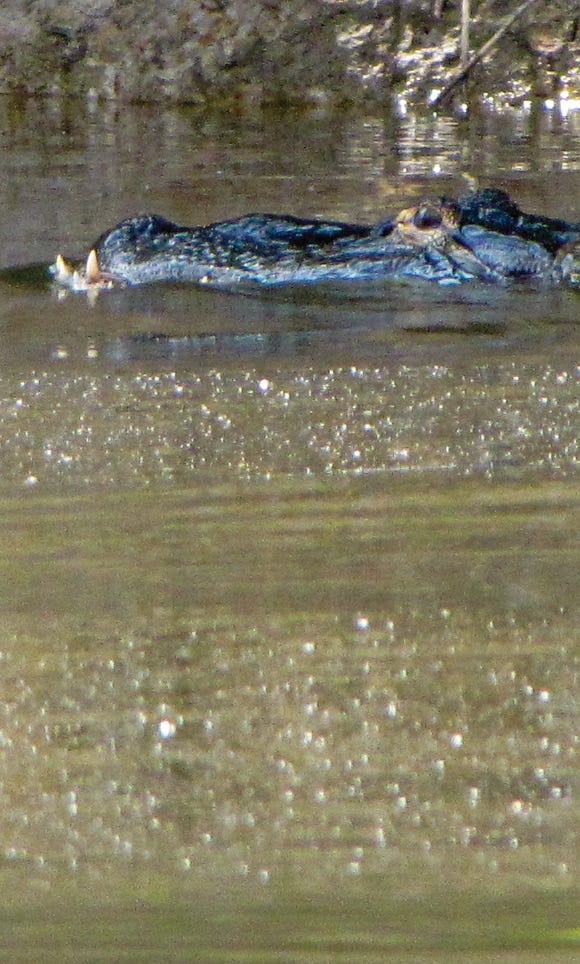
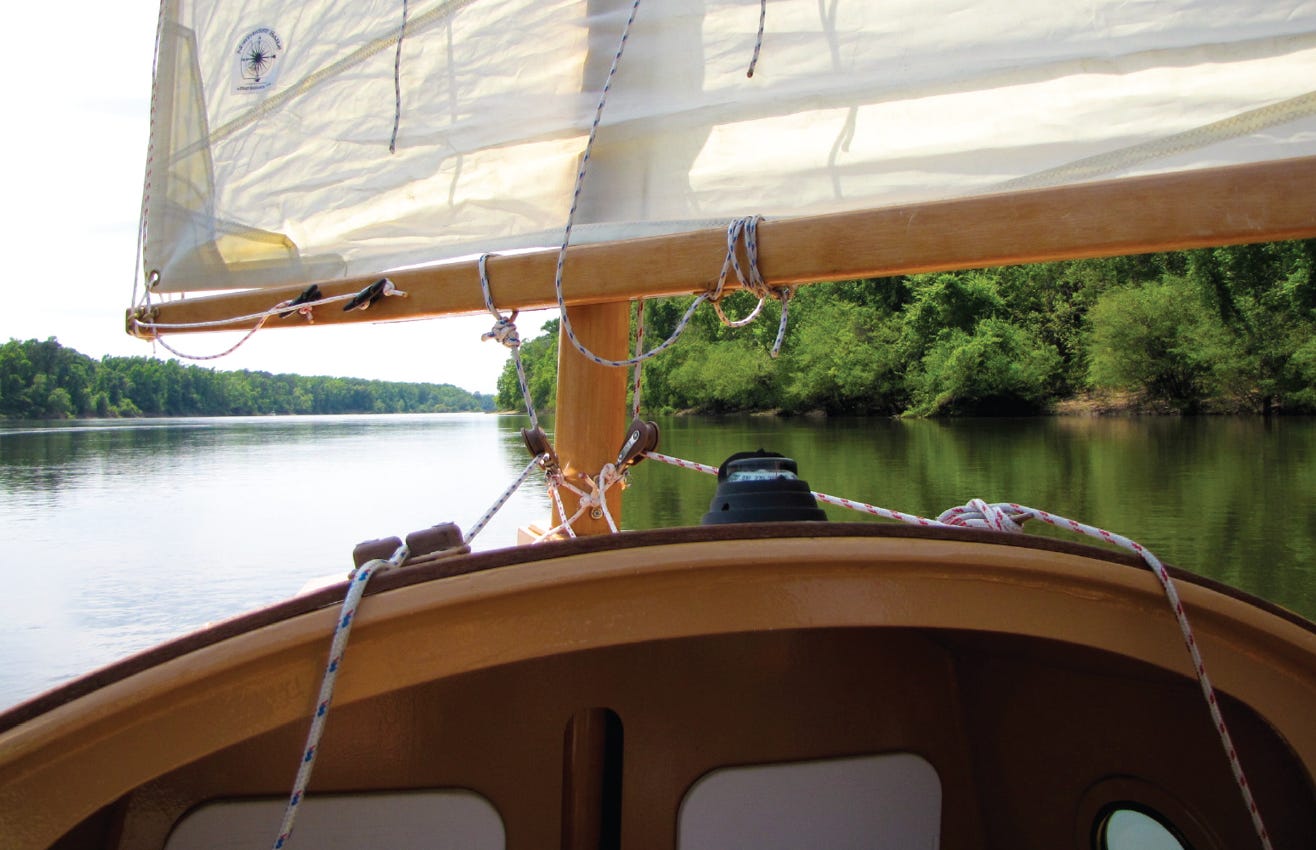
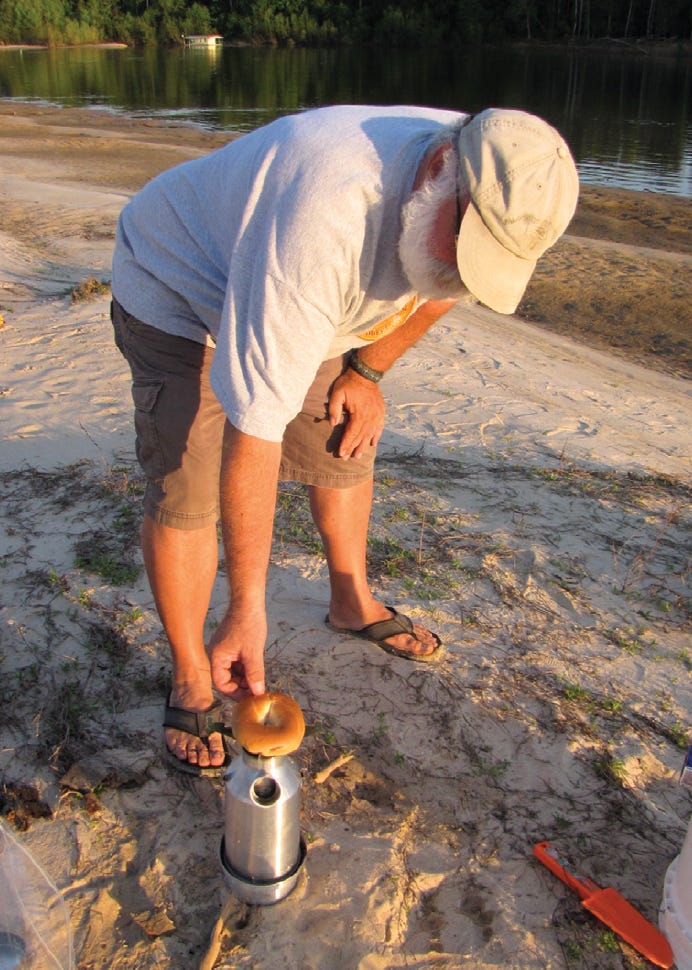
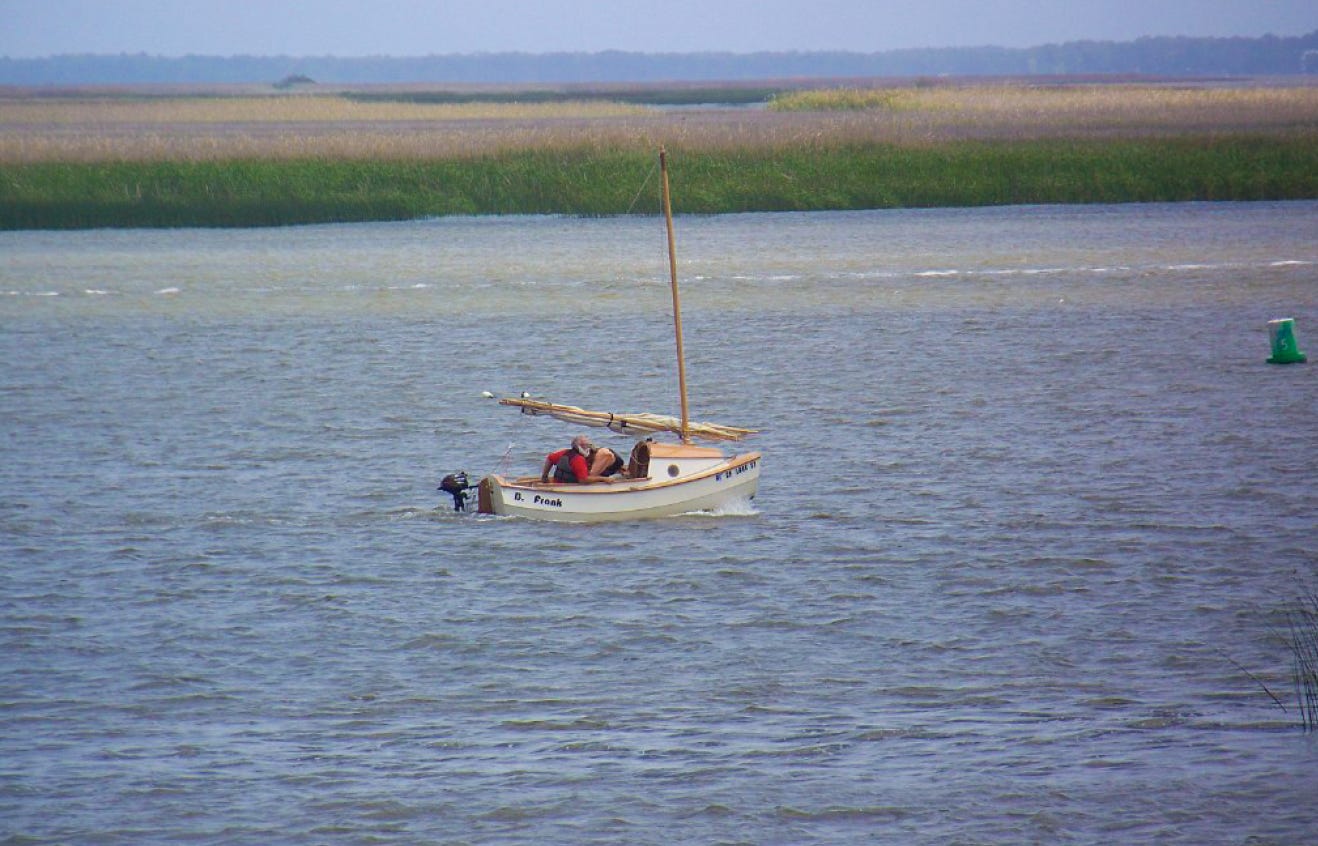
Nice adventure! I had to check Google Maps to follow along and discover such a wild river! Thanks for sharing your trip! AllthebestRoy
Well written, and a fun read. Nicely done, thank you.